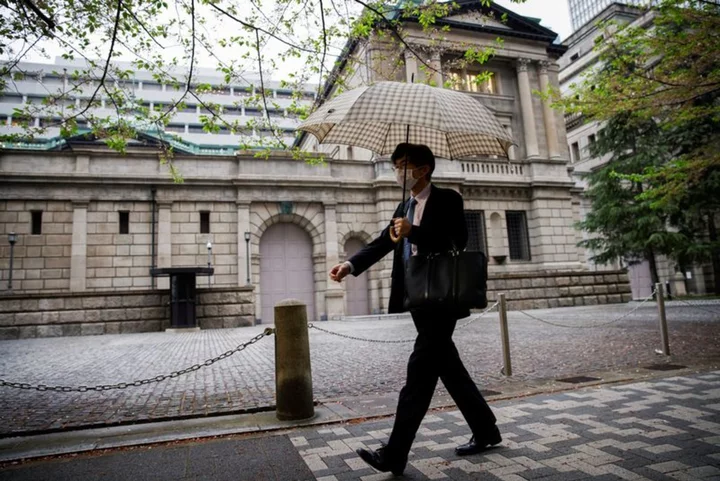By Leika Kihara
TOKYO The Bank of Japan (BOJ) has tweaked its bond yield control policy and will allow interest rates to rise more freely, action that market participants have interpreted as the start of a slow shift away from decades of massive monetary stimulus.
Since 2016, the BOJ has guided short-term interest rates at minus 0.1% and the 10-year government bond yield at around 0% in action known as yield curve control (YCC). It has also set an allowance band of 0.5% above and below the 10-year yield target.
The BOJ made no changes to the yield targets or allowance band on Friday. But it watered down the band to a "reference" rather than a "rigid limit," and said it will allow the 10-year yield to move above the cap as long as it stays below 1.0%.
Here is what Friday's decision means for YCC and what could happen next:
WHAT DOES THIS ALL MEAN?
The BOJ was criticised by investors last year for distorting market pricing by defending the 0.5% yield cap with unlimited bond buying. The bank's priority has been to avoid a recurrence of that criticism.
With the inflation rate staying above the BOJ's 2% target for longer than it expected, there was a risk of the 10-year yield challenging the cap again. The bank has forestalled the risk by deciding to intervene only when the 10-year yield could breach 1.0%.
By allowing long-term rates to move more flexibly, the BOJ has effectively extended the lifespan of YCC and bought itself time before embarking on bigger policy shifts.
WHY NOW?
Governor Kazuo Ueda said the BOJ had underestimated inflation risk, and that it was necessary to act pre-emptively to avoid bigger monetary tightening steps later.
However, political considerations also likely played a part. A weak yen against the U.S. dollar has become a headache for the government by boosting household living expenses via higher import costs. Moreover, currency intervention has been hard to justify with recent yen movement being fairly moderate.
That left the onus on the BOJ to keep unwelcome yen falls at bay. Ueda said exchange rate volatility was among the side effects of YCC that the BOJ was watching out for.
WHY DID BOJ GO WITH SUCH A COMPLEX ADJUSTMENT?
The BOJ could have removed the allowance band altogether or raise the yield target. Doing so, however, would have given market participants the impression it was raising interest rates, contradicting its pledge to "patiently" keep policy ultra loose until inflation hovers consistently around 2% backed by solid wage growth.
By maintaining YCC, the BOJ can also preserve tools that it could use in the event of long-term rates spiking - tools such as the ability to buy unlimited amounts of bonds at fixed rates.
WHAT COULD HAPPEN NEXT AND WHAT'S THE TRIGGER?
By intervening only when the 10-year yield breaches 1.0%, the BOJ can steadily taper its bond buying and lay the groundwork to eventually dismantle YCC.
Policymakers will scrutinise data to see whether the economy can weather global headwind and allow firms to keep raising prices and wages next year.
If they are convinced inflation will consistently move around 2% backed by solid wage growth, the BOJ could remove the yield cap and shift to a policy solely targeting short-term interest rates.
The timing would depend on how the BOJ sees the cost-merit balance of YCC. Some analysts said such action could come as early as October, when the BOJ next reviews its economic growth and inflation projections.
WHAT WILL BOJ NOT DO?
Given uncertainty about whether Japan will see demand-driven inflation take hold, the BOJ wants plenty of time before embarking on full-fledged policy normalisation.
That means the threshold for ditching negative rates, and pushing short-term rates to positive territory, is high.
The BOJ is currently reviewing past monetary policy steps to draw lessons from its use of unconventional tools. It may wait until the findings become available around May before raising interest rates.
(Reporting by Leika Kihara; Editing by Christopher Cushing)

